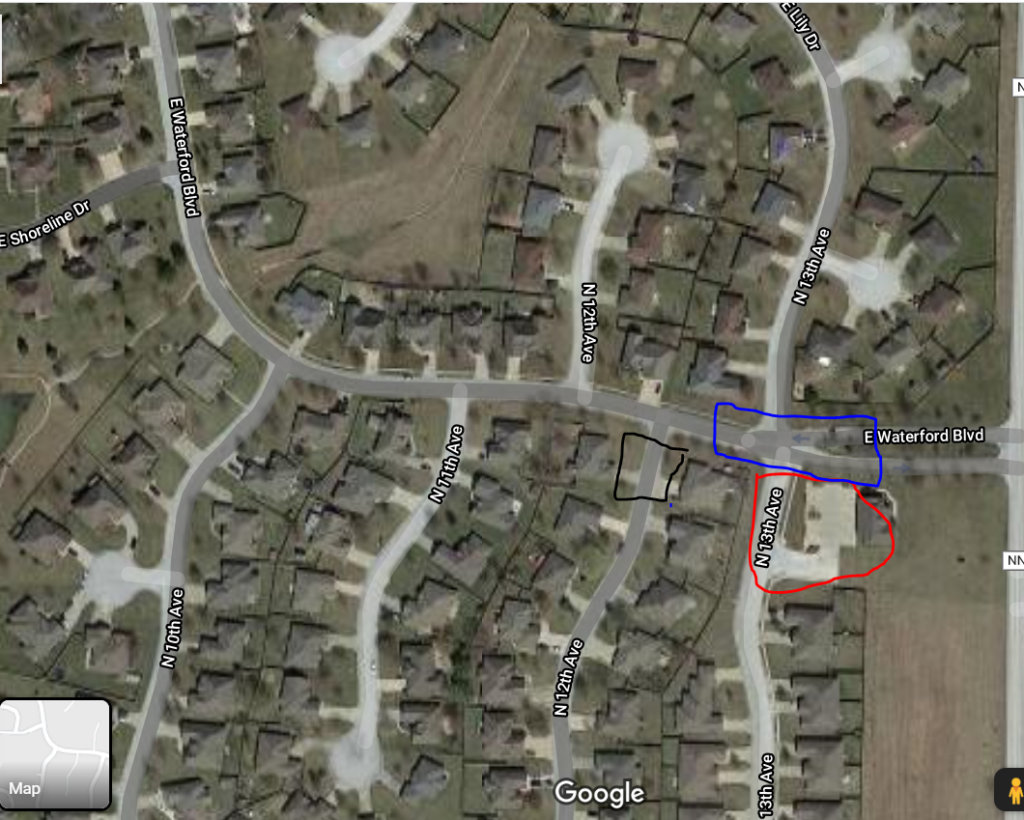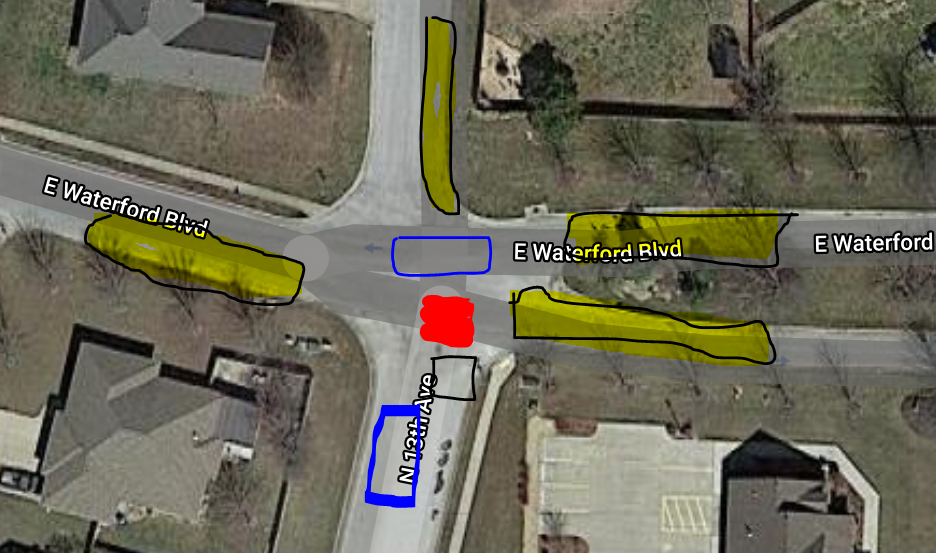This “article” was written as an after action for a recent tornado. I decided to slightly modify it and put it out as an article.
What happened? Two tornadoes went through Christian county and one directly through two subdivisions. There were dozens of tornadoes across the state due to this storm.
Once activated, our S&R team met outside the affected area (per our SOP) and then caravanned into the primary affected zone. Our group had 18 personnel.
When we arrived some law enforcement were already there and directed us to park in a different area. It was poor communication and where they blocked the road was right at the main entrance to the subdivision. Our arrival, as a team, ran into dozens of people who were just driving through looking at the damage.
We stopped at a location near the disaster area and a highway. It was chosen so all other emergency responders could find it quickly and emergency vehicles could get in and out as quickly as possible. Once we figured where to park out of the way, we began setting up our S&R trailer and pop-up to create our command post (CP).
We drew up search assignments and double-checked and assigned equipment based on expectations. We assigned equipment that individual team members do not normally keep in their go bags.
We have S&R “go bags” and keep standard tools with them. In my case knowing it was a subdivision hit I added a gas shut off tool, a water shut off tool and brought several extra sheets (in case we needed to cover multiple bodies).
In the standard bag we have head mounted lights and handheld flashlights with extra batteries, HAM radios, face masks, work gloves, glo-sticks, team vests and shirts as well as ID. We keep rope, body bags (which we also use to move wounded), marking tape as well as was markers and eye protection.
Citizens of the area flocked to our CP looking for hope. Fortunately, we have several team members trained as chaplains or chaplain aids. They went to work while team leads gathered information from others in the affected area as to the worst hit homes.
Since we were the initial responders (law enforcement was there before us but only directing traffic and trying to keep the rubber-neckers out), we were briefed by the residence, condensed the data to make a plan for search as well as making sure utilities were safe.
While gathering this data the local Police Chief arrived on the scene and assumed control of the scene. I introduced myself as the Emergency Management Directors (EMD) appointee and attempted to give him a 60 second rundown of the situation.
He shut me down and our assignments and started assigning other emergency responders (Fire, EMS, Sheriff) to search. After some “issues” with others not knowing what to do, he attached our S&R team members as individuals to the teams he created. This was wise on his part since we were the only ones with actual in-depth S&R experience.
The subdivision we were, was inside the city limits of Ozark. City Police and Fire, county EMS, the Sheriff as well as the Emergency Management Department, and under that our S&R Teams were there. The utility company was also called to shut off downed power lines and broken gas lines as needed.
Due to how the chief wanted team, there was basically one law enforcement officer, one fire fighter, one EMT / Paramedic and one of our S&R members on each team. If a location needed more people for assistance an additional team was sent. If utilities need to be shut off, a utility worker was attached to a LEO and sent to the specific area.
The Main CP had no safety officer briefing, this was the Chiefs first major event and he was a bit overwhelmed. The Emergency Management and S&R Teams had their own briefing while I was at the main CP.
While leadership was an issue, all departments did all they could, and worked as cohesively as they could under the leadership circumstances.
I was the CERT, S&R, and Christian County Emergency Management representative in the main CP. The Director for Emergency Management was at another tornado location. The assistant EMD arrived at our scene about 25 minutes after our arrival and told me to continue in my position, she served at our team CP, coordinating from there.
Basically, I had to mediate between the Chief of police and EM to get our individual team members to meet with their assigned team, and be sure they had communication back to the S&R CP. When a Team completed their assigned area, I was to notify the Chief of Police that they were ready for a new assignment. I was also responsible for the location of all our team members at all times.
The primary incident Command Post was created at the edge of tornado damage during a full-on thunderstorm. The main CP was in the middle of the road (divided 2 lane subdivision road at an intersection of North 13th and E Waterford. Surrounding it (literally in a circle) were the other departments (Fire, Sheriff, Utilities, Police). We (S&R) were setup on North 12th street just off of E Waterford, in order to be out of the way of vehicles.
This layout blocked all incoming traffic and prevented ambulances and utility vehicles from being able to get to damaged homes. They had to find an alternative routes in. Suggestions to move to a parking lot about 100 feet away and off of the main road were literally scoffed at.

This location of the main CP, put all leaders from Fire, Police, Sheriff, Emergency Medical Services, Emergency Management and Utility company representatives, under one 10×10 canopy. Each of them setup 10×10 pop-up shelters (except the sheriff who had a command vehicle) within 10 feet, circling the CP. This caused all radios to overload each other, not due to channels but due to the proximity of so many radios.

Since it was at night and under heavy rain the Incident Commander called it a night once all the residence were accounted for and un-safe utilities were shut off. We were on scene about four hours.
After the S&R was concluded, per the Police Chief, and he called in all teams, we made sure all team members were accounted for and reported that status to the main CP. We also performed an immediate “hot wash” (debrief from each team member in 60 seconds or less). Checked in all gear and made sure our teams were healthy, hydrated and fit to caravan back to our initial rally point. Leadership (Myself and the assistant Christian County Emergency Administrator) stayed on site until all personnel, including other departments (Fire, Police, Sheriff and EMS) had cleared the initial scene.
We notified all our people who were present to be prepared to return the next day, to the same rally point, if they could, to assist those affected in recovering their assets, securing property from further damage et al, as would be needed.
LESSONS LEARNED:
I learned that each division or department needs a CP setup at least 100 foot away from the main event CP. The noise level of people giving and receiving orders, updates et al, combined with the weather made in person communication difficult.
Since most members of our teams have been part of the team since the Joplin Tornado (2011), I feel we were a well-oiled and tested group. The primary failure we found out was our HAM equipment. We supply our own and most of us have the inexpensive Beofeng units. The LEO and Fire department’s radios literally shutdown ours when they were used. This was caused by the other radios “power” or interference.
As a result, I would receive request from the Local Police Chief, who was the incident commander, then walk over to the CERT CP and radio the teams or give word to the person who was in charge of sending out teams or individuals as requested. Remember this is going on with a thunderstorm (rain lightning et al) and about 100 emergency personnel and the people of the subdivision and the obligatory reporters who show up.
This resulted in lesson three, my CERT S&R pack is not water resistant. I had on my reflective CERT “trench coat” however that did not cover my pack. Even though I was in the main CP, I still kept my pack on. Running back and forth between the main CP and the S&R CP left my bag and all its contents soaked. Next time I need to either take it off and store it, or wear a poncho. My vehicle was about ½ mile away and I was unwilling to take the time to run to it, drop the pack off and run back.
Observations:
Incident Commander: He obviously had not taken the State and Federal required FEMA training, he wanted to be in control but literally was emotionally out of control. I still had to work under and with him and maintain composure.
Liaison Officer: I assigned our team members to be liaisons to the affected community since each other department was incapable of stepping out of their daily roles. Our team leads and those trained in mercy skills were able to keep the non-affected neighbors calm, and either productive or out of the way while helping those affected be sure their families were gathered and in a safe environment (which was sometimes at a neighbors house, sometimes in their vehicle heading to a local relatives or to the appropriate emergency room).
The lack of preparation (mentally and physically) by the local police Chief was a grave cause for concern. All other responding agencies expressed this too. For debrief to our teams I reiterated the need to remain calm and respectful to incident commanders while being forceful or working with others to get the appropriate job done. There were times I had to side work with the Sheriff’s department and fire department to do what was needed, not what was assigned.
Until we meet again, keep your booger hook off the bang switch until on target and ready to fire.
